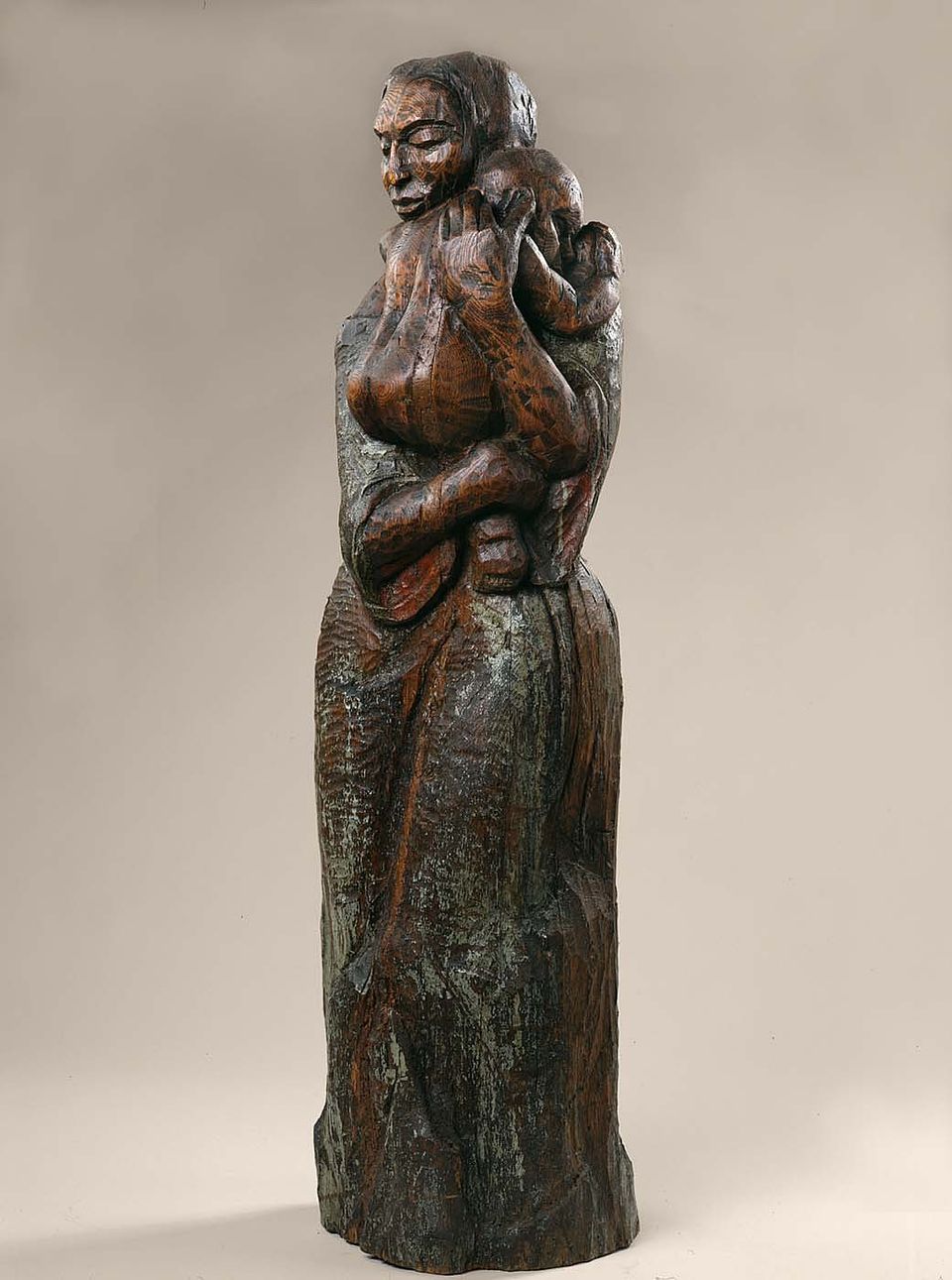Direct Carving

Selma Burke, Untitled (Woman and Child), ca. 1950, Smithsonian American Art Museum
Spontaneous! Truthful! Liberating! Direct carvers often used such words to describe their unconventional method of sculpting, in which an artist works directly on a piece of stone or wood as opposed to with a model, cast, or preconceived design. Direct Carving includes twenty-four sculptures from across the twentieth century, nearly all of which are drawn from the museum’s permanent collection, that showcase this method.
Description
For centuries, sculptors modeled a design in clay or wax and then worked with foundries or professional carvers to reproduce the image in bronze or marble via industrial or mechanical means. Direct carvers rejected this method, instead choosing to work spontaneously, cutting directly into stone and wood and preserving the harmony between those materials and the resulting sculpted forms. Sculptures made of reclaimed wood from old furniture, stones from demolished buildings, and fieldstones from farms are all found in this installation. In upending academic tradition, these artists created intensely personal works of art.
The “truth of materials,” or the idea that the inherent properties of the raw material should remain apparent in the finished work of art, was a core belief among direct carvers. Many of these artists saw nature as a collaborator, selecting materials with distinct physical properties—such as veins in stone or burls in wood—and allowing these elements to suggest designs and shapes. For some direct carvers, “liberating” forms was an almost mystic practice.
The direct carving movement gained momentum in the United States after 1915 and flourished until the mid-twentieth century, attracting men and women from diverse backgrounds who looked to a wide range of influences, including African, Native American, Southeast Asian, and folk art.
Direct Carving is organized by Karen Lemmey, sculpture curator, with generous support from Lucy S. Rhame.













